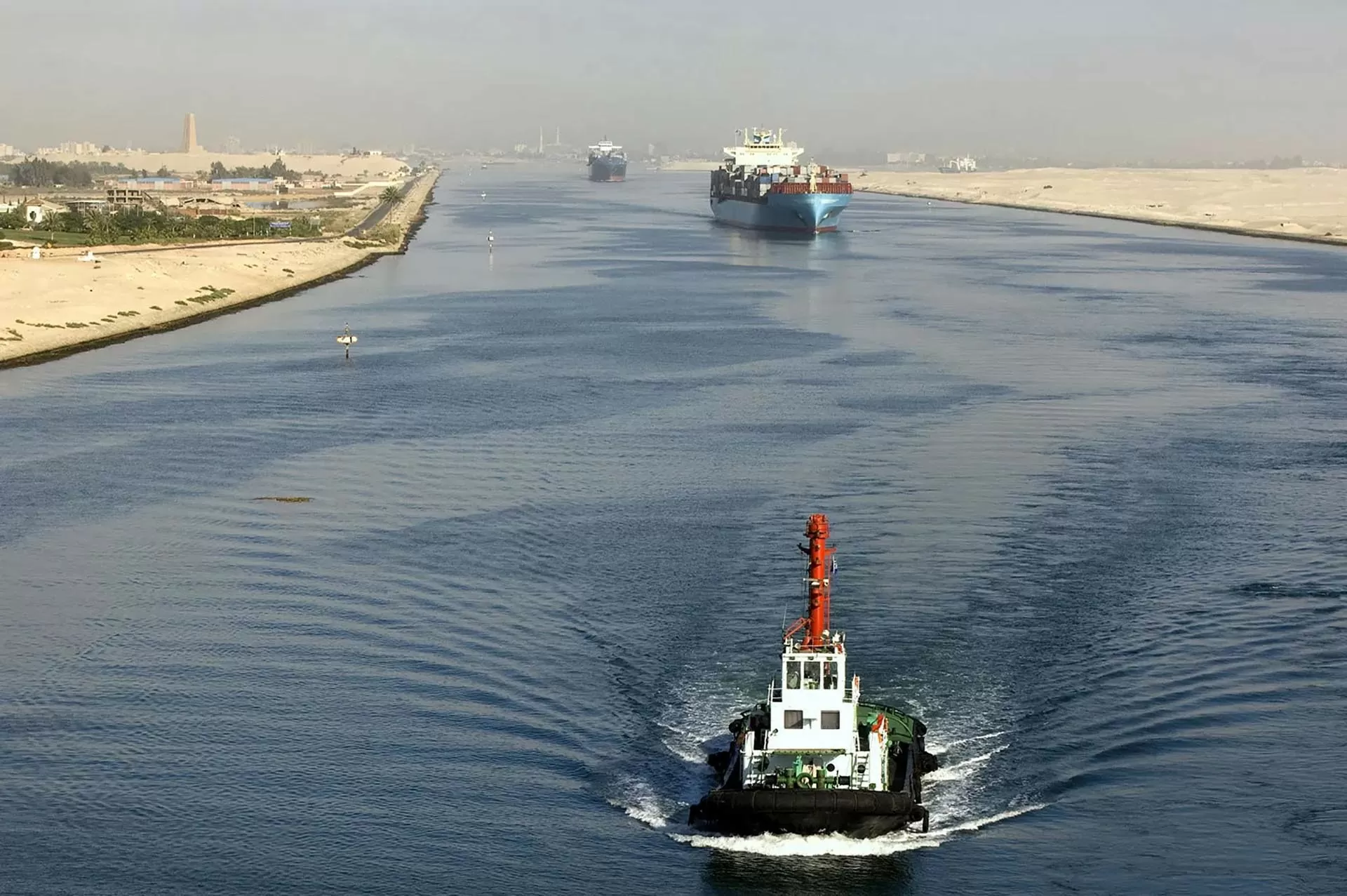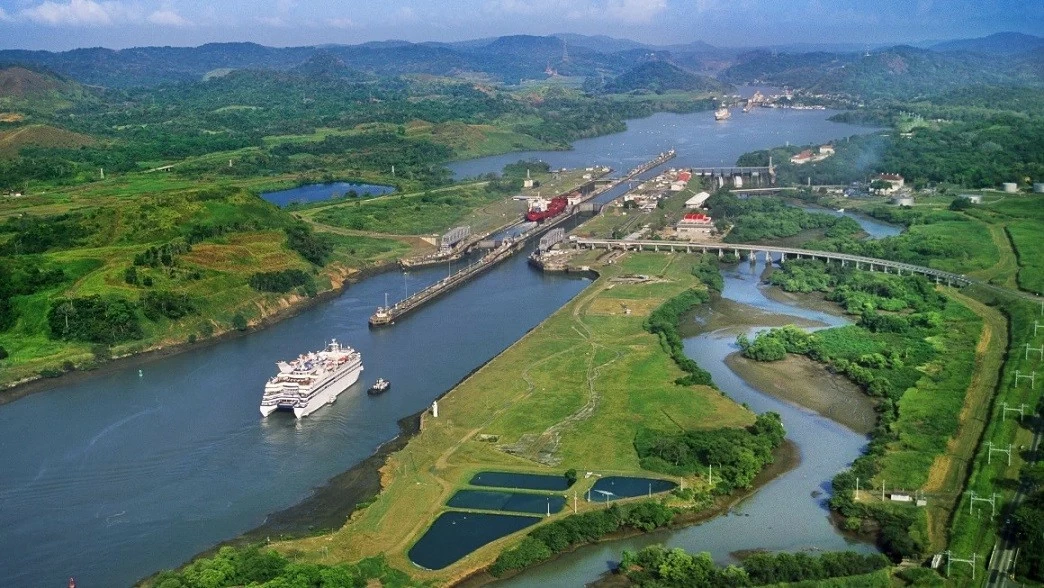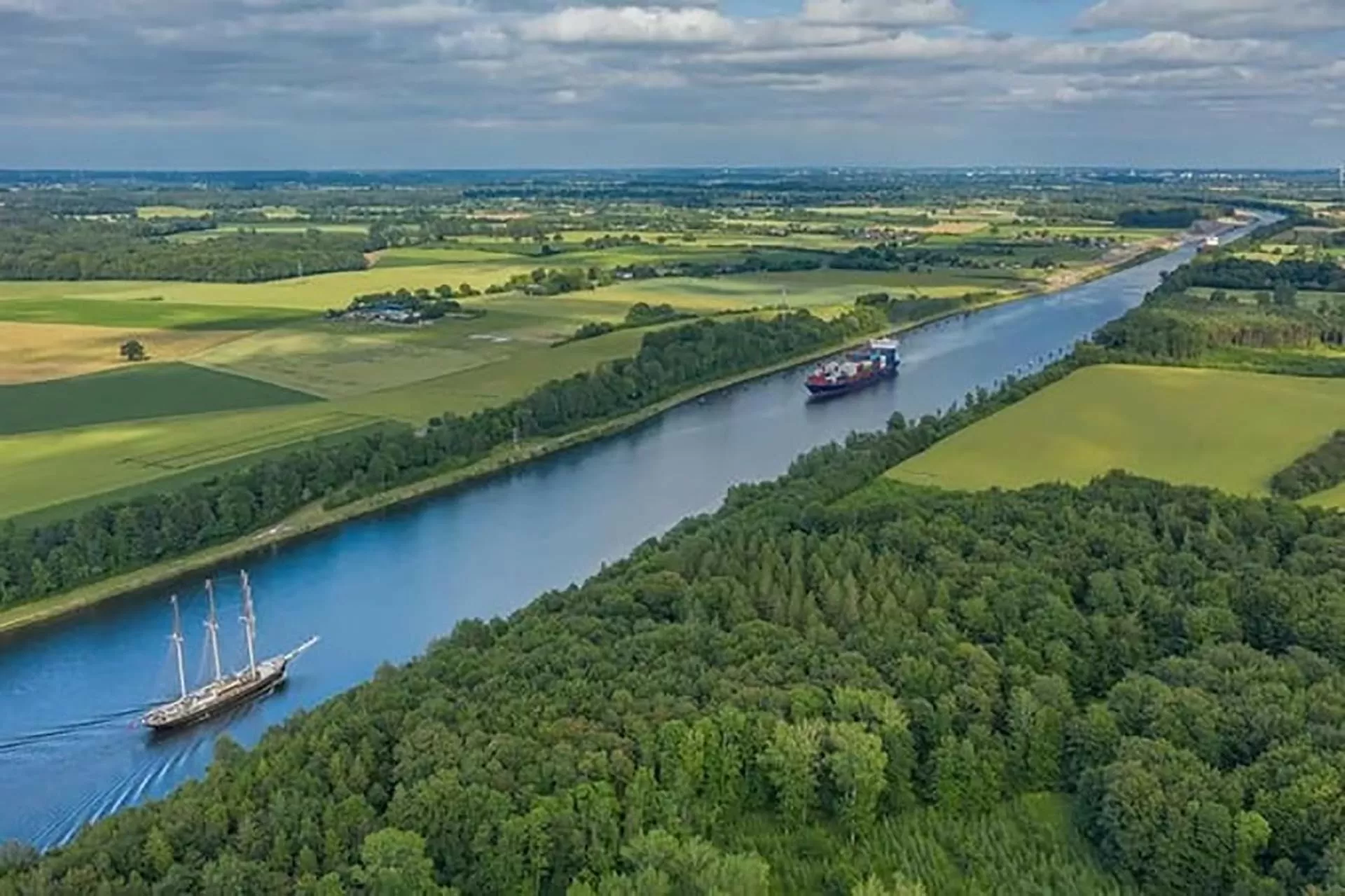The appearance of artificial canals such as Suez, Panama, Kiel... is like the magical gate of Doraemon, helping to break geographical limits, opening up countless opportunities for global economic, cultural and political development.
Over the centuries, man-made canals have proven their irreplaceable strategic value, becoming historical witnesses and driving forces of human development.
 |
| The Suez Canal, one of the world's most important shipping routes, connects the Mediterranean Sea and the Red Sea. (Source: Shutter stock) |
Suez - The "national" canal
The Suez Canal, a man-made waterway that connects the Mediterranean Sea to the Red Sea, has long played a strategic role in both trade and geopolitics, according to the World Economic Forum. At 193.5 kilometers long, the canal passes through Egyptian territory and separates the African continent from Asia.
Built over a decade and opened on November 17, 1869, the Suez Canal became the shortest shipping route between Europe and the Indian Ocean. The journey from the Indian Ocean to the Atlantic Ocean was reduced to just 7,000 km, much shorter than going around the Cape of Good Hope, saving significant time and shipping costs.
Not only does it have economic significance, the Suez Canal is also considered a symbol of globalization. This is a vital traffic route, used by the most countries in the world, playing an important role in shaping global trade and economic dynamics.
According to the World Economic Forum (WEF), today, Suez handles about 12% of the world's total trade volume, including 7% of global oil. In 2023, a record 23,000 ships passed through the canal with 1.3 billion tons of goods transported, equivalent to an average of 63 ships per day.
However, in July this year, Suez Canal Authority (SCA) Chairman Osama Rabie said that Egypt's Suez Canal's annual revenue would fall by about 23.4% in the 2023-2024 fiscal year. The number of ships passing through this fiscal year also fell by more than 5,000 compared to the 2022-2023 period, to 20,048. The decline was due to security challenges in the Red Sea, as Yemen's Houthi movement stepped up attacks on ships passing through the waters.
This is not the first time the Suez Canal has faced political challenges, although the 1888 Convention of Constantinople declared that the canal must be open to all nations in times of peace and war, and prohibited military operations in its waters.
The Suez Canal has been closed twice due to political tensions. The first time took place in 1956-1957 after the British, French and Israeli forces attacked Egyptian forces in retaliation for Cairo's decision to nationalize the canal. The second time was the result of the 1967 Arab-Israeli War, when the canal became a combat line and had to be closed for eight years.
Control of the Suez Canal not only brings Egypt huge revenues but also affirms the importance of this North African country as a strategic trade and transportation center.
 |
| The Panama Canal is a vital shipping route between the Pacific and Atlantic Oceans. (Source: Getty Images) |
Panama - Modern Wonder
The Panama Canal, 82 km long, is one of the world's greatest engineering feats, and was listed by the American Society of Civil Engineers as one of the seven modern wonders.
Located in Central America, across the Isthmus of Panama and connecting two major oceans, the Atlantic and the Pacific, the Panama Canal is a revolutionary project, not only in terms of engineering but also in terms of its influence in international trade and strategy.
The construction of this canal was one of the greatest engineering challenges in history, lasting 30 years and going through two main construction phases with the participation of France and the United States. After many difficulties with terrain, climate and epidemics, the canal was inaugurated in 1914.
The success of the project revolutionized global shipping, creating a safer and much shorter shortcut than the dangerous journey around Cape Horn in South America. As a result, the distance from New York to San Francisco was reduced from 22,500 km to just 9,500 km, increasing the efficiency of shipping and connecting the major economic regions of Asia, the Americas and Europe more closely.
Today, the Panama Canal continues to play an important role in international trade. According to statistics from the Panama Logistics Portal, more than 14,000 ships pass through it each year, transporting more than 203 million tons of cargo, equivalent to about 6% of global maritime trade. In fiscal year 2024, the Panama Canal will record a total of 11,240 small and deep-water commercial vessel voyages, transporting 210 million tons of cargo.
In addition to its economic significance, the Panama Canal also has important strategic value. For nearly a century, the structure was under the control of the United States, allowing the country to easily move troops and goods between the two coasts. This not only strengthened Washington's military power but also increased its influence on the international stage. However, by the end of 1999, the canal was completely transferred to Panama.
 |
| Located in the German state of Schleswig-Holstein, the Kiel Canal connects the North Sea with the Baltic Sea. (Source: Getty Images) |
Kiel – The Bloodline of Europe
The Kiel Canal, 98 km long and opened in 1895, is one of the busiest man-made waterways in Europe.
Located in the German state of Schleswig-Holstein, the canal connects the North Sea with the Baltic Sea, playing an important role in shortening the journey by about 460 km compared to the route via the Kattegat Strait. Thanks to that, ships not only save time and costs but also avoid risks from sea storms and difficulties in transporting goods.
The Kiel Canal was originally built for the German Navy. It was a strategic route for warships to move quickly between the two seas without having to pass through the Kattegat Strait, which was vulnerable to foreign control. However, after World War I, the Treaty of Versailles required that the canal be opened to all international shipping, although German control remained.
Today, not only limited to military purposes, the Kiel Canal has become a vital waterway of Europe.
According to the Geeksforgeeks portal, more than 20,000 cruise ships and 40,000 merchant ships pass through the Kiel Canal every year, transporting 80-100 million tons of goods. This number confirms Kiel's irreplaceable role in promoting trade in the Nordic region and the whole of Europe as well as connecting the continent's economy.
In the context of climate change and increasing demand for maritime transport, Germany has implemented many projects to modernize the Kiel Canal. The projects not only increase the transport capacity to meet the needs of modern ships, but also focus on minimizing environmental impacts and protecting the regional ecosystem, reflecting Germany's efforts to maintain the strategic role of the canal while ensuring sustainable development.
Outstanding inland canal
In addition to international canals connecting major seas, there are many important inland canals in the world, notably the Grand Canal of China and the Erie Canal of the United States.
The Grand Canal, at 1,776 km long, is the longest canal in the world and is recognized as a world heritage site by the United Nations Educational, Scientific and Cultural Organization (UNESCO). Built in ancient times, the canal connects the northern and southern regions of China, helping to promote economic development and domestic trade.
The Erie Canal, approximately 584 km long, is one of the most prominent irrigation projects in the United States, connecting the Great Lakes region with New York City. Completed in 1825, the Erie Canal played an important role in connecting manufacturing areas with major commercial centers, contributing significantly to the development of the American economy in the 19th century, helping to expand markets and promote domestic industries.
Canals around the world, although having their own historical, cultural and economic significance, are all symbols of the aspiration to overcome natural barriers to connect civilizations and promote international trade.
These “magic gates” not only realize the dream of a borderless world but also affirm the importance of waterway transport in the sustainable development and integration of humanity.
Source: https://baoquocte.vn/kenh-dao-nhan-tao-canh-cong-than-ky-ket-noi-the-gioi-295399.html




![[Photo] Ho Chi Minh City holds funeral for former President Tran Duc Luong](https://vphoto.vietnam.vn/thumb/1200x675/vietnam/resource/IMAGE/2025/5/24/9c1858ebd3d04170b6cef2e6bcb2019e)


![[Photo] The Government Standing Committee works with ministries and branches on the real estate market situation.](https://vphoto.vietnam.vn/thumb/1200x675/vietnam/resource/IMAGE/2025/5/24/e9b5bc2313d14c9499b8c9b83226adba)


















![[Photo] Party and State leaders visit former President Tran Duc Luong](https://vphoto.vietnam.vn/thumb/1200x675/vietnam/resource/IMAGE/2025/5/24/960db9b19102400e8df68d5a6caadcf6)




































































Comment (0)